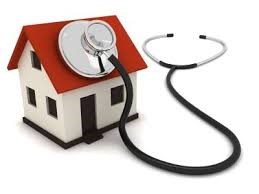
Ways to Get Rid of Sick Building Syndrome
In recent years, a condition that is frequently encountered both in residences and workplaces—but often goes undiagnosed—is increasingly drawing attention: Sick Building Syndrome (SBS). This syndrome particularly affects individuals living or working in closed and air-conditioned buildings, causing complaints such as headaches, fatigue, burning eyes, cough, and concentration difficulties, which tend to decrease when away from the building.
What is Sick Building Syndrome?
Sick Building Syndrome is a syndrome defined by the World Health Organization (WHO). It covers common and temporary health problems experienced by individuals inside a building without a specific physical or biological cause. Typical symptoms of this syndrome include:
-
Headache
-
Nasal congestion, postnasal drip
-
Dry throat
-
Burning or watering eyes
-
Fatigue and concentration difficulties
-
Skin irritations
-
Feeling of shortness of breath
These symptoms are often mistaken for other illnesses. However, the common factor is that the complaints are directly related to the duration of time spent inside the building.
Causes: Risks from an Engineering Perspective
Most of the underlying causes of Sick Building Syndrome arise from mechanical system issues and the materials used in the building. They can be summarized as follows:
a) Insufficient Ventilation
-
Lack of fresh air leads to increased indoor CO₂ levels and decreased oxygen.
-
According to ASHRAE 62.1 standards, at least 8–10 L/s of fresh air per person should be supplied.
-
In closed-loop air conditioning systems with 100% recirculation, VOC (volatile organic compound) accumulation increases.
b) Poor Filtration
-
If air filters are insufficient or the system is not maintained, dust, pollen, microbial particles, and allergens enter the indoor environment.
-
Especially older G4 filters only trap coarse particles, while harmful fine particles like PM2.5 can enter the indoor space.
c) Humidity Imbalance
-
Excess humidity causes mold growth, and low humidity causes mucosal irritation.
-
Indoor relative humidity should be maintained between 40–60%.
d) Inappropriate Material and Furniture Selection
-
Chemicals like formaldehyde released from building materials, paints, and adhesives degrade indoor air quality.
-
PVC flooring, solvent-based varnishes, and low-quality MDF furniture contribute to VOC emissions and SBS.
Medical Consequences
Individuals exposed to Sick Building Syndrome over a long period may develop more serious issues such as:
-
Increased allergic rhinitis and asthma attacks
-
Chronic sinusitis and migraine complaints
-
Psychological effects: anxiety, reduced work performance
-
Skin diseases and eczema-like symptoms
Thus, this syndrome is not just a temporary discomfort but a multidisciplinary public health issue threatening both individual health and workforce productivity in the long term.
Ways to Prevent Sick Building Syndrome
a) Properly Designed and Maintained HVAC Systems
-
Use high-efficiency F7–F9 filter systems.
-
Supply constant fresh air with heat recovery ventilators (HRV/ERV).
-
Monitor indoor air quality with CO₂ sensor-driven demand-controlled ventilation (DCV) systems.
-
HVAC systems should be maintained and cleaned at least twice a year.
b) Continuous Monitoring of Indoor Air Quality
-
Periodically measure CO₂, VOC, PM2.5, temperature, and humidity levels.
-
These data can be monitored in real time with smart building automation systems.
c) Architectural and Material Measures
-
Prefer low-VOC building and furniture materials.
-
Integrate operable window systems allowing natural ventilation into architectural design.
-
Use easy-to-clean, low-emission flooring instead of carpet coverings.
d) Ergonomic and Hygienic Arrangement of Workspaces
-
Avoid overcrowding in open offices.
-
Indoor plants systems may help reduce airborne toxins.
-
Direct airflow from air conditioners should not blow directly on people.
Sick Building Rehabilitation: The Recovery Process
If Sick Building Syndrome is observed in an existing structure, the following steps can be taken:
-
Conduct a detailed indoor air quality analysis.
-
Restructure filtration and fresh air rates in HVAC systems.
-
Use mobile air cleaners (HEPA + carbon filters) temporarily if needed.
-
Perform mold analysis on ceiling and wall surfaces and isolate if found.
-
Establish a complaint reporting system for employees and conduct regular health screenings.
Regulations and Standards
The following standards may guide the fight against Sick Building Syndrome:
-
ASHRAE 62.1: Ventilation for Indoor Air Quality
-
TS EN 16798: Energy Performance and Indoor Air Quality in Buildings
-
WELL Building Standard: International certification for healthy buildings
-
LEED v4: Indoor air quality and material selection criteria
-
Workplace Indoor Air Quality Regulation (Turkey): Occupational safety air quality limits
Healthy Building Means Healthy People
It is scientifically proven that HVAC systems are not only comfort systems but vital systems directly affecting human health. Especially in places like hospitals, schools, offices, and hotels where people stay long-term, engineering and human health must be considered together.
Measures against Sick Building Syndrome increase not only individual comfort but also form the basis for public health, efficient workforce, and sustainable living. Building bridges between mechanical systems and medical knowledge will shape the healthy buildings of the future.
İlker KURAN
Alperen Engineering Ltd. Co.







